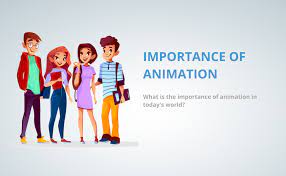The Role of Animation in Entertainment and Storytelling

Animation plays a significant role in entertainment and storytelling by bringing imagination to life and enhancing the audience’s viewing experience. It involves the creation of moving images, which may be either hand-drawn or computer-generated, to tell a story or convey a message.
One of the significant advantages of animation is that it allows creators to depict things that would be impossible to achieve using live-action films. For instance, animation can depict fantastical creatures, locations, and events that cannot be replicated in real life. It also allows for greater creativity in character design and animation, enabling the creation of unique and memorable characters.
Animation is commonly used in children’s entertainment, such as cartoons and animated movies. These forms of animation can teach important values and lessons in a fun and engaging way, which can help children learn and develop important life skills.
In addition to children’s entertainment, animation is also widely used in adult-oriented entertainment. Animated movies and TV shows can explore complex themes and ideas in a way that is accessible to a broad audience. For example, the Pixar movie “Inside Out” explored emotions and mental health in a way that was both entertaining and educational.
Animation is also used in video games, where it allows players to immerse themselves in virtual worlds and interact with unique and interesting characters. Additionally, animation is used in advertising and marketing to create memorable and attention-grabbing commercials.
In summary, animation plays a crucial role in entertainment and storytelling by allowing creators to bring their ideas to life in ways that are impossible using live-action films. It enables the exploration of complex themes and ideas and is a powerful tool for teaching and engaging audiences of all ages.
Animation can also be used to enhance the storytelling experience in live-action films. For example, the use of computer-generated imagery (CGI) in movies such as “The Avengers” or “Jurassic Park” allows filmmakers to create realistic and convincing visual effects, which can help to transport audiences to different worlds and environments.
Animation can also be used to convey messages in a more lighthearted and humorous way. For instance, political cartoons often use animation to depict political figures or events in a satirical or comical manner. This can help to engage audiences and make them more receptive to the underlying message.
Moreover, animation has become increasingly popular in the music industry, with many artists using animated music videos to tell stories and convey messages through visual imagery. These videos often have a unique style and aesthetic that can help to differentiate them from live-action music videos.
In recent years, animation has also become an important tool for education and training. Animated videos can be used to explain complex concepts in a way that is easy to understand, making them a valuable resource for students and professionals alike.
Finally, the use of animation in virtual and augmented reality technologies has opened up new possibilities for storytelling and entertainment. Virtual reality experiences can transport audiences to new and exciting environments, while augmented reality can bring animated characters and objects into the real world, creating unique and immersive experiences.
In conclusion, animation plays a vital role in entertainment and storytelling, offering endless possibilities for creators to bring their ideas to life and engage audiences in unique and exciting ways.


